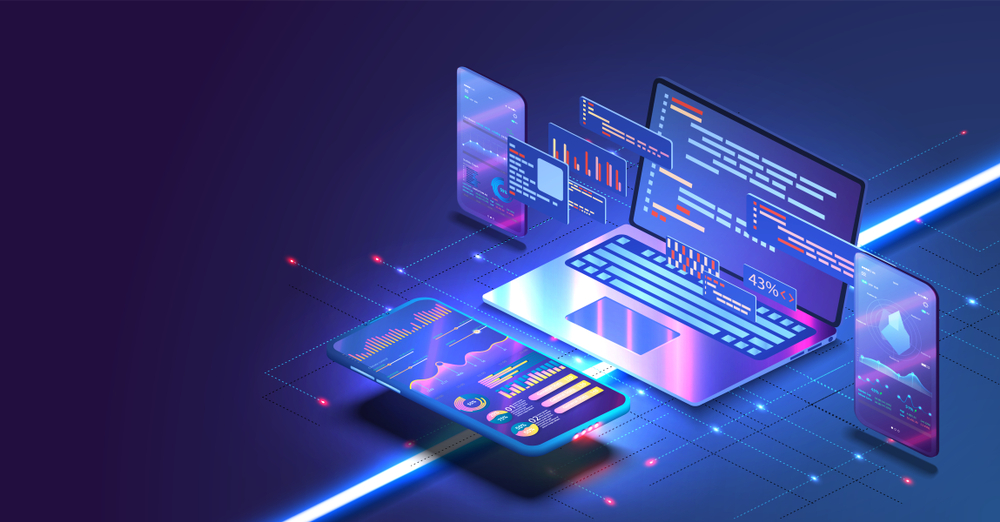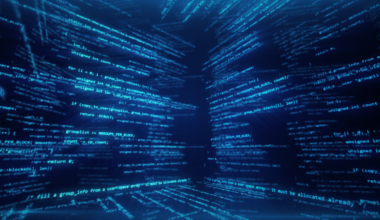In today’s digital landscape, having an effective and visually appealing website is crucial for businesses to establish their online presence and stay competitive. Given the quick development of web design technology, it’s critical to follow the most recent developments to deliver top-notch user experiences. For businesses to improve their online presence and stay competitive, this article examines the most recent web design trends and technology.
Introduction
The way businesses run and interact with their clients has been completely transformed by the Internet. In addition to acting as a virtual showroom, a well-designed website may be an effective marketing tool. It helps businesses showcase their products or services, engage with their target audience, and drive conversions. It’s crucial to adopt the most recent web design trends and technology that correspond with consumer expectations and preferences if you want to accomplish these aims.
Importance of Web Design for Businesses
It’s crucial to emphasize the importance of web design for organizations before diving into the newest trends. A well-designed website can:
- Create a positive first impression: A visually appealing and user-friendly website instantly captures the attention of visitors and leaves a lasting impression.
- Enhance user experience: A well-structured and intuitive website navigation ensures a seamless browsing experience, leading to increased user engagement and satisfaction.
- Improve search engine visibility: Implementing SEO best practices in web design can help businesses rank higher in search engine results, driving organic traffic and visibility.
- Boost conversions: Effective web design elements such as compelling calls-to-action, clear messaging, and intuitive layouts can significantly increase conversion rates.
- Establish brand identity: Consistent branding elements, such as colors, typography, and visuals, help reinforce brand identity and improve brand recognition.
After understanding the significance of web design, let’s investigate the newest trends and technology that companies may use to stay competitive.
Responsive Web Design
Responsive web design becomes more of a need than a luxury in today’s mobile-driven society. It is crucial to make sure websites adjust to various screen sizes and resolutions given the rise in visitors accessing websites through cellphones. Responsive web design encompasses several techniques, including:
Mobile-Friendly Designs
Designing websites with mobile users in mind is crucial. Mobile-friendly designs optimize the layout, content, and interactions to provide a seamless experience on smartphones and tablets.
Adaptive Layouts
Adaptive layouts use breakpoints to adapt the website’s design and content based on the device’s screen size. This guarantees that users, no matter what device they’re using, receive the best possible experience.
Fluid Grids
Fluid grids allow the website’s layout to adjust proportionally to different screen sizes. This approach ensures that the website’s elements and content are displayed correctly, maintaining a consistent visual experience.
Minimalistic Design
Due to its elegance and simplicity, minimalist design has grown in favor in recent years. This design approach focuses on stripping away unnecessary elements and creating a clean and clutter-free interface. Some key elements of minimalistic design include:
Clean and Simple Interfaces
Minimalistic designs prioritize simplicity and clarity. They use ample white space, clean typography, and limited color palettes to create visually pleasing and easy-to-navigate interfaces.
Focus on Typography
Typography plays a crucial role in minimalistic design. It utilizes bold, readable fonts to convey messages effectively and create a visual hierarchy. Well-chosen typography enhances the overall aesthetic appeal of the website.
Use of Negative Space
The space between items on a webpage is referred to as negative space or white space. It helps in directing the user’s attention and improves readability. Effective use of negative space creates a visually balanced and harmonious design.
Dark Mode
In recent years, dark mode has become incredibly popular due to both its visual appeal and its usefulness. The term “dark mode” describes the use of a website’s background in a dark color scheme, most often black or dark grey. Let’s explore its advantages:
Reduced Eye Strain
Dark mode makes it easier on the eyes, especially in dimly lit areas. By using darker colors, it minimizes the amount of emitted light, making it more comfortable for users to view content for extended periods.
Enhanced User Experience
Dark mode provides a unique and visually striking experience for users. It can make certain elements, such as images and text, stand out more prominently, creating a captivating and immersive browsing experience.
Aesthetic Appeal
Dark mode has a modern and sophisticated aesthetic that appeals to many users. A website may appear clean and sophisticated as a result, standing out from the competition.
Micro interactions
Micro-interactions are subtle, interactive elements that engage users and enhance their overall experience. These small animations, sounds, or visual effects provide feedback and create a sense of delight. Here’s why micro-interactions are important:
Interactive Elements
Micro-interactions make websites more interactive by providing immediate responses to user actions. They can be as simple as a button changing color when hovered over or more complex interactions like progress bars or animated icons.
Engaging User Experience
Microinteractions add an extra layer of engagement to a website. They make the user experience more enjoyable and satisfying, creating a positive impression of the brand or business.
Enhanced Brand Perception
Well-designed micro-interactions can communicate a brand’s personality and values effectively. Consistent and thoughtful micro-interactions help establish a memorable brand identity and build trust with users.
Voice User Interface (VUI)
Voice user interfaces (VUIs) have gained popularity along with smart speakers and virtual assistants, making them more crucial than ever in web design. VUIs enable users to interact with websites and applications using voice commands. Let’s explore the benefits of incorporating VUIs:

Voice Search Optimization
The usage of voice search to access information online has grown in popularity. Optimizing websites for voice search can improve their visibility in search engine results and drive more targeted traffic.
Conversational Interfaces
Conversational interfaces enable users to engage in natural and dynamic conversations with websites or virtual assistants. These interfaces provide personalized recommendations, answer user queries, and facilitate seamless interactions.
Hands-Free User Experience
VUIs offer a hands-free browsing experience, allowing users to interact with websites while performing other tasks. This convenience makes websites more accessible and user-friendly, particularly for individuals with mobility issues.
Augmented Reality (AR)
Augmented reality (AR) has revolutionized how companies advertise their goods and services online. By integrating virtual elements into the real world, AR provides immersive and interactive experiences. Here’s how businesses can leverage AR in web design:
Interactive Product Visualization
AR allows users to visualize products in a real-world context. For example, customers can use their smartphones to see how furniture would look in their homes before making a purchase. This interactive product visualization enhances the shopping experience and increases customer confidence.
Immersive User Experiences
AR creates captivating and immersive experiences by overlaying virtual elements in the real world. Businesses can leverage AR to engage users in unique ways, such as interactive games, virtual tours, or virtual try-on experiences.
Increased Engagement and Sales
AR experiences are highly engaging and memorable, which can lead to increased user engagement and higher conversion rates. Businesses that incorporate AR in their web design can stand out from competitors and capture the attention of their target audience.
Video Backgrounds
Video backgrounds have become a popular web design trend that helps businesses create visually captivating experiences. By utilizing high-quality videos as the background of a website, businesses can:
Captivating Visuals
Videos capture attention and create a dynamic and immersive visual experience. They allow businesses to showcase their products, tell a story, or convey a brand’s personality more effectively than static images.
Improved User Engagement
Video backgrounds can significantly improve user engagement and time spent on a website. They have the power to evoke emotions, deliver messages, and compel users to explore further.
Storytelling Opportunities
Videos provide an excellent opportunity for businesses to tell their story or highlight their unique selling points. Through visually appealing narratives, businesses can establish an emotional connection with their audience and leave a lasting impression.
Artificial Intelligence (AI) in Web Design
Web design is currently using artificial intelligence (AI) to improve user experiences and streamline procedures as a result of substantial breakthroughs in the field. Here are some ways businesses can leverage AI in web design:
Personalized User Experiences
AI enables websites to personalize content based on user preferences, behaviors, and past interactions. By delivering relevant and tailored experiences, businesses can increase user engagement and conversion rates.
Chatbots and Virtual Assistants
AI-powered chatbots and virtual assistants provide instant customer support, answer frequently asked questions, and assist users in real time. They enhance customer satisfaction and free up human resources for more complex tasks.
Automated Design Processes
AI algorithms can analyze user data, trends, and design patterns to generate optimized layouts, color schemes, and typography. This automation streamlines the web design process and improves efficiency.
Progressive Web Apps (PWA)
Progressive Web Apps (PWAs) offer a hybrid between web pages and mobile applications. They provide a mobile app-like experience within a web browser, offering several benefits for businesses:
Mobile App-like Experiences
PWAs provide app-like features, such as push notifications, offline functionality, and access to device hardware. Users can add PWAs to their home screens, giving businesses increased visibility and engagement.
Offline Functionality
PWAs can work offline or with limited connectivity, ensuring users can access content and functionality even when they’re not connected to the internet. Businesses that depend on real-time data or cater to customers in remote locations may particularly benefit from this capability.
Faster Performance
PWAs utilize caching and other performance optimization techniques to deliver fast-loading web pages. They eliminate the need for users to wait for downloads or updates, resulting in improved user satisfaction and reduced bounce rates.
Cybersecurity in Web Design
The security of a website must be ensured due to the rise in cyber attacks. Implementing robust cybersecurity measures in web design is crucial to protect user data and maintain trust. Here are some key considerations:
SSL Certificates and HTTPS
Securing websites with SSL certificates and enabling HTTPS encryption helps protect sensitive user information during data transmission. It also boosts user trust, as indicated by the padlock icon in web browsers.
Two-Factor Authentication (2FA)
The usage of two-factor authentication strengthens user accounts’ security. Along with their login and password, customers must also submit an additional verification mechanism, like a one-time password.
Regular Security Audits
Performing regular security audits and vulnerability assessments helps identify and address potential security loopholes. It guarantees that websites have the most recent security patches and precautions.
Integration of Social Media
Social media integration has become an essential aspect of web design for businesses. It allows seamless interaction between websites and social media platforms, enhancing user engagement and expanding brand reach. Here’s how businesses can leverage social media integration:
Social Sharing Buttons
Integrating social sharing buttons allows users to easily share website content on their preferred social media platforms. It helps increase brand exposure and drives organic traffic from social media channels.
Embedded Feeds and Widgets
Embedding social media feeds or widgets on websites enables businesses to showcase their social media presence directly on their web pages. It invites customers to look over and interact with the company’s social media content.
User-generated Content Integration
Businesses can benefit from user-generated content by incorporating it into their website, such as customer reviews, testimonials, or social network posts. It adds authenticity and social proof, influencing potential customers’ purchasing decisions.
Enhanced Page Speed and Performance
Page speed and performance play a crucial role in user satisfaction and search engine rankings. Optimizing website speed and performance ensures a smooth browsing experience. Here are some optimization techniques:
Optimized Images and Assets
Compressing and optimizing images and other web assets reduces their file size without compromising quality. As a result, it leads to quicker loading times and enhances overall performance.
Caching and Compression
The quantity of data exchanged between the user’s browser and the web server is decreased by implementing caching mechanisms and enabling compression methods like GZIP compression. This leads to faster page rendering and improved performance.
Efficient Code and Scripting
Optimizing the website’s code and scripts, such as HTML, CSS, and JavaScript, helps reduce file sizes and minimize unnecessary requests. It improves the website’s performance and load times.
Conclusion
Businesses need to be up to date on the newest web design trends and technology to stay competitive in the modern digital world. Embracing responsive design, minimalistic aesthetics, dark mode, micro-interactions, VUIs, AR, video backgrounds, AI, PWAs, cybersecurity measures, social media integration, and performance optimization can elevate a business’s online presence and user experience.
Businesses may build visually beautiful, user-friendly, and captivating websites that captivate their target audience by utilizing these trends and technology. Embracing innovation and keeping up with evolving design practices will enable businesses to establish a strong online presence, drive organic traffic, boost conversions, and ultimately stay competitive in the digital landscape.








1 comment